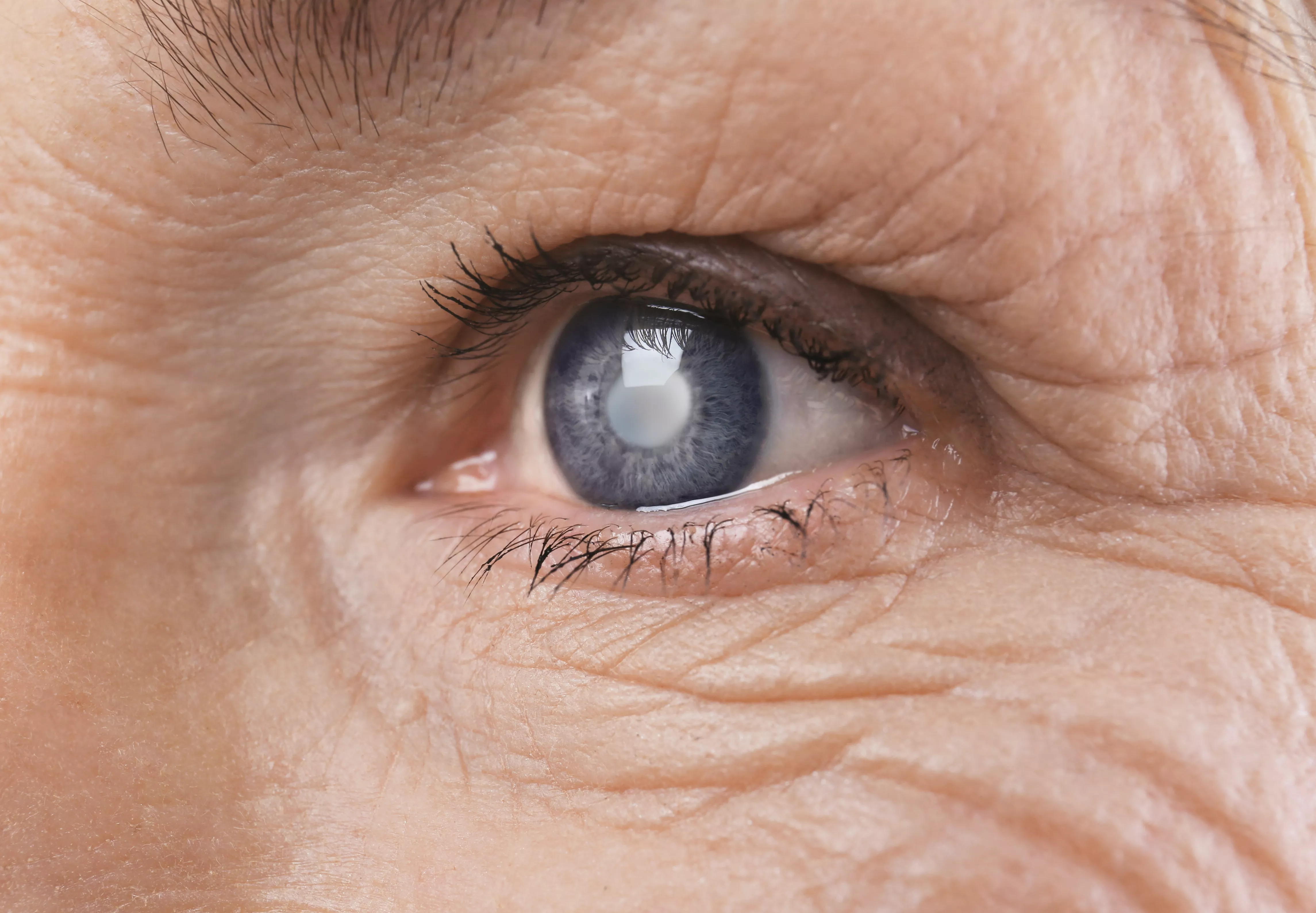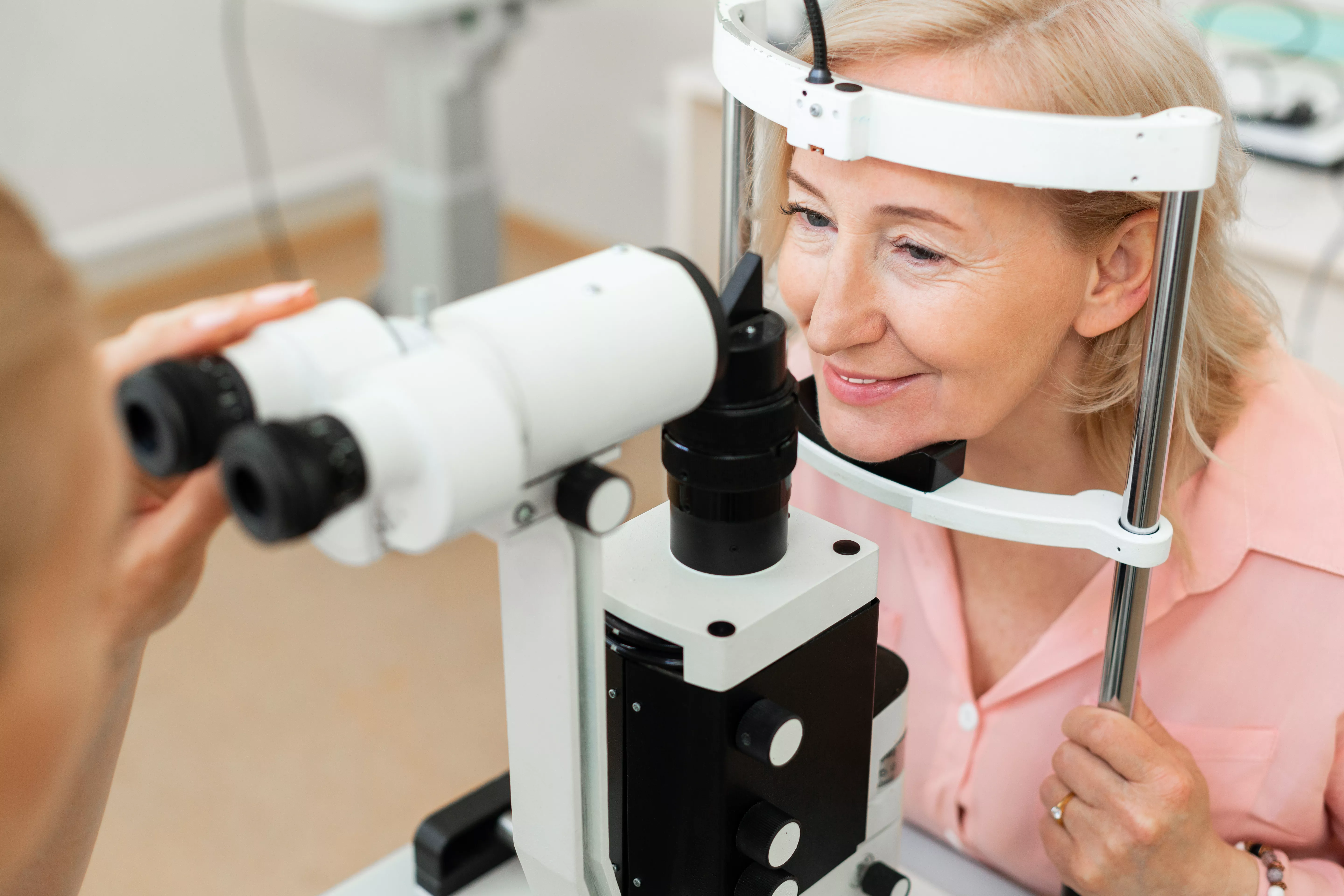If you or someone you know has low vision, you may already know that February is Low Vision Awareness Month. For those without low vision, this is an excellent opportunity to learn about eye-related conditions that impact millions of Americans, including people in your community. We encourage everyone to use this month as a proactive way to keep their eyes in good health. Schedule a vision screening for yourself or a family member and talk to your eye doctor about what to do if you experience a decrease in eyesight.
• What is low vision?
• What causes low vision?
• What is AMD?
• What is glaucoma?
• What is diabetic retinopathy?
• How can you protect your vision?
What Is Low Vision?
Low vision is a decrease in eyesight that prevents someone from completing everyday tasks such as cooking, reading a newspaper, or seeing the face of a loved one clearly. This medical condition is beyond what the average person experiences as they get older and can substantially impact a person’s daily life.
Unlike traditional conditions such as myopia, hyperopia, or astigmatism, low vision can’t be corrected by a prescription for contact lenses or eyeglasses. In most cases, doctors are unable to restore the eyesight of someone with low vision. Instead, the person must rely on vision rehabilitation programs, adaptive devices, and the assistance of those around them to navigate their daily activities.
What Causes Low Vision?
Although age does play a role in low vision, it’s not the single determining factor. Doctors can attribute this decrease in eyesight to several common causes, such as cataracts, macular degeneration, glaucoma, or an eye injury. As with other vision problems, diabetes also increases your risk of developing a decrease in eyesight.
Experiencing a decrease in eyesight can be scary. However, learning about the common vision problems that increase your risk of low vision, as well as tips for how to care for your eyes, can help you be proactive in protecting your eyesight.
What Is AMD?
 AMD, also known as Age-Related Macular Degeneration, is a degenerative retina condition that causes blurry vision or spots in the center of your line of sight. AMD can prevent people from living a normal life because it causes a reduction in vision that affects a person’s ability to see what’s in front of them. In fact, AMD is the most common cause of low vision for adults age 55 and older.
AMD, also known as Age-Related Macular Degeneration, is a degenerative retina condition that causes blurry vision or spots in the center of your line of sight. AMD can prevent people from living a normal life because it causes a reduction in vision that affects a person’s ability to see what’s in front of them. In fact, AMD is the most common cause of low vision for adults age 55 and older.
AMD increases your risk of low vision, especially if not treated early. An eye surgeon may be able to stop the progression of macular degeneration, but only if it is detected early. Risk factors for developing macular degeneration include uncontrolled high blood pressure, smoking, and obesity. Women are also at a slightly higher risk than men, although that shouldn’t keep you from making a regular appointment with your eye care professional.
What Is Glaucoma?
The retina is connected to your brain by the optic nerve, allowing the world around us to be translated by our brain into what we see. Glaucoma causes damage to the optic nerve, which can cause a decrease in eyesight, low vision, or even blindness if not diagnosed and treated correctly. Glaucoma impacts our peripheral vision along the side of the eyes. Like low vision, optic nerve damage caused by glaucoma isn’t reversible. Although an eye doctor cannot cure glaucoma, they can create a treatment plan to prevent or reduce further damage.
People at advanced risk of glaucoma include older adults and those with high blood pressure or a family history of glaucoma. Additionally, according to the National Eye Institute, Mexican Americans and African Americans are at higher risk of glaucoma than other races.
Annual eye exams are critical for those with a higher risk of developing glaucoma. The condition is difficult to detect without an eye exam, and many people don’t know they have a problem until they begin to notice a decrease in eyesight.
What Is Diabetic Retinopathy?
Diabetes is a condition that causes elevated levels of blood sugar, also known as glucose. Our bodies obtain glucose from the foods we eat, and then, with the help of insulin, the glucose travels into our cells to be used for energy. In people with type 1 diabetes, the body doesn’t make insulin, and the glucose remains in the blood. In type 2 diabetes, which is the more common of the two, the body doesn’t use its insulin supply well.
Diabetes raises a person’s risk of developing certain eye conditions, but it can also be directly responsible for a decrease in vision. Diabetic retinopathy is damage to the retina’s blood vessels. This damage can come in the form of swelling, fluid leaking, and abnormal blood vessel growth. As with the other eye conditions, diabetic retinopathy can go unnoticed until a person experiences a decrease in eyesight or low vision, which results in permanent damage.
How Can You Protect Your Vision?
If you have vision problems or are over the age of 60, the American Optometric Association recommends you schedule an eye exam every year to check your prescription as well as to check for vision changes that may be indicative of a preventative condition. For those with diabetes, older adults, and anyone with a known risk factor for conditions that cause a decrease in eyesight, your eye doctor may also recommend making an appointment with a low vision specialist. Although conventional eye doctors can diagnose several eye diseases and conditions, a specialist receives additional training in detecting declining sight and instruction on how to offer adaptations and solutions that allow people to retain as much independence as possible.
A low vision specialist conducts a much more thorough exam and consultation than an optometrist. During an appointment, the specialist will discuss the person’s decline in vision, conduct an eye exam, and provide a comprehensive look at the various types of visual aids available. A low vision specialist may also refer a patient to a mobility specialist, rehabilitation teacher, occupational therapist, or other specially trained professional to assist them in maintaining or regaining their independence.
Whether you have low vision or not, attending an annual exam with your eye doctor can be vital in helping prevent vision problems. If you experience a decrease in eyesight or other changes in your vision, contact your eye care provider immediately.
 Save yourself from getting into rush hours and buy your contacts online.
Save yourself from getting into rush hours and buy your contacts online.







